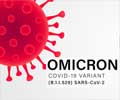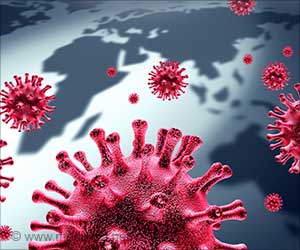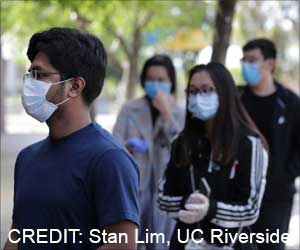When exposed to BA.5, early-stage infection in mice shows a greater extent of pathology compared to mice infected with alternative strains or the control group.

Age-dependent acquisition of pathogenicity by SARS-CoV-2 Omicron BA.5
Go to source). Since the start of the COVID-19 pandemic in 2019, the SARS-CoV-2 virus has produced a number of variants, including Alpha, Beta, Delta and Omicron, each with its own sub-variants. Researchers from Cornell University in the US used engineered mice to compare SARS-COV-2 omicron sub-variants.
‘Genetically engineered mice known as K18-hACE2 mice expressed a human receptor, enabling SARS-CoV-2 to enter mouse cells that would otherwise be inaccessible to the virus. #coronavirus #omicron #BA.5’





"One of the things we found is that the strain that causes more pathology, BA.5, replicates much faster early on during infection," said Avery August, Professor of microbiology and immunology in the College of Veterinary Medicine (CVM)."By doing that, the virus generates a really strong immune response, which then leads to increased pathology and symptoms compared to sub-variants that don't replicate as fast," August said.In the research, published in the journal Science Advances, the team found that early Omicron BA.1 and BA.2 subvariants also replicated and spread in the K-18 mice, but they caused minimal illness and death. BA.5's Impact on Mice: Weight Loss, Pathology, and Immune System Insights
On the other hand, BA.5-infected mice exhibited significant weight loss, high pathology in lungs, high levels of inflammatory cells and cytokines, signalling proteins that are associated with inflammation.While some 3-month old mice survived, all 5 to 8 month-old BA.5-infected mice died. The animal model makes it possible for researchers to begin to tease apart components of the immune system that could be focused on or blocked to potentially lessen or eliminate disease.Some scientists believe that targeting cytokines with drugs could provide a potential treatment that tempers the immune response and lessens symptoms.The researchers found many similarities between the mouse model and how these sub-variants behave in humans, with BA.5 being more virulent in both.One big difference was that most people who developed illness from BA.5 didn't die, but in K-18 mice, the subvariant was particularly pathogenic and lethal.An advantage of the mouse model is that all the mice are identical with the same genetic background. When studying humans, many variables -- such as previous conditions, genetics and whether someone has previously been immunized or infected -- can affect the pathological outcome of the disease.
Also, the mouse model allowed the researchers to examine disease in the lungs over time. They also found higher viral loads in the strain that caused more infection, he said. Older mice were more affected by the virus than younger mice as well.
Reference:
- Age-dependent acquisition of pathogenicity by SARS-CoV-2 Omicron BA.5 - (https://www.science.org/doi/full/10.1126/sciadv.adj1736)
Source-IANS















